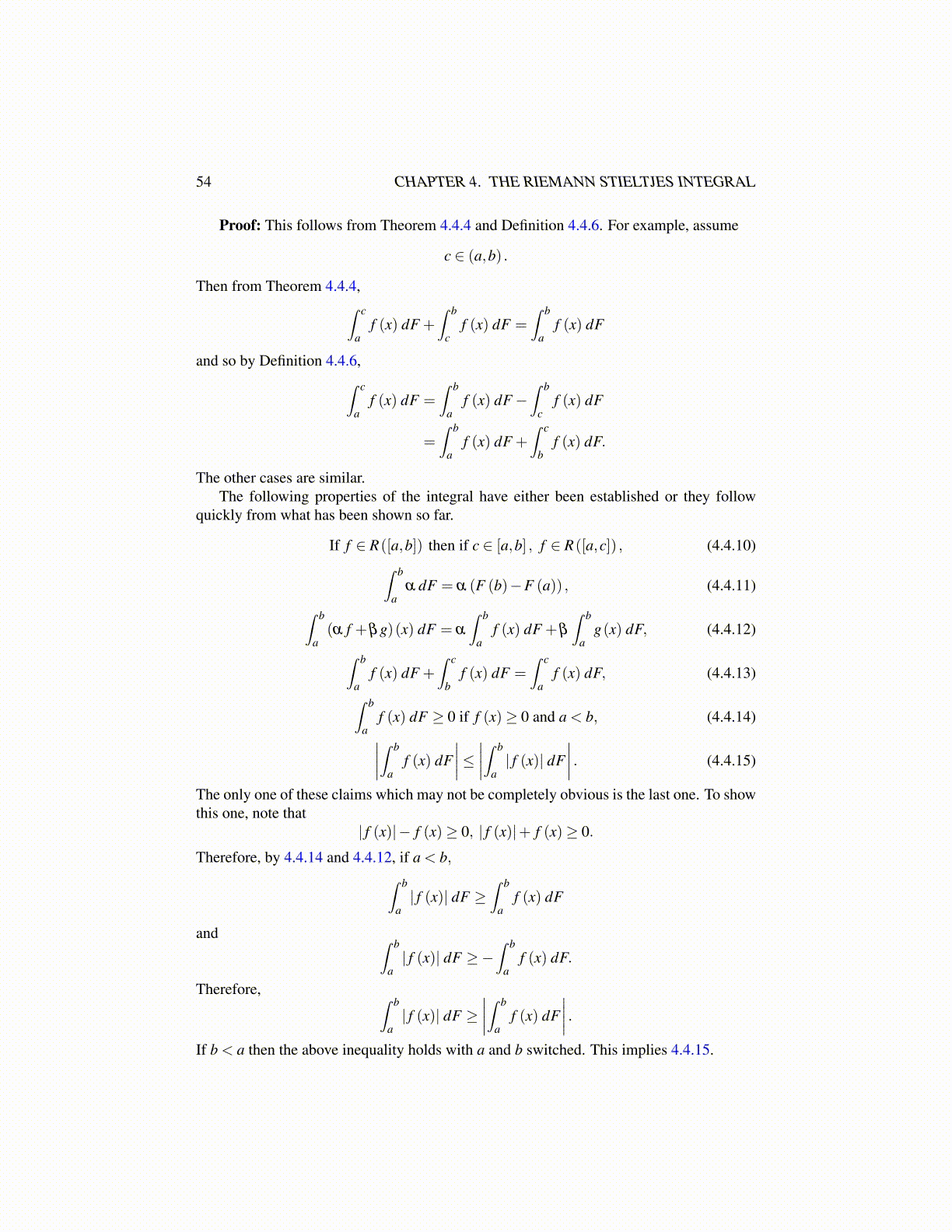
54 CHAPTER 4. THE RIEMANN STIELTJES INTEGRAL
Proof: This follows from Theorem 4.4.4 and Definition 4.4.6. For example, assume
c ∈ (a,b) .
Then from Theorem 4.4.4,∫ c
af (x) dF +
∫ b
cf (x) dF =
∫ b
af (x) dF
and so by Definition 4.4.6,∫ c
af (x) dF =
∫ b
af (x) dF−
∫ b
cf (x) dF
=∫ b
af (x) dF +
∫ c
bf (x) dF.
The other cases are similar.The following properties of the integral have either been established or they follow
quickly from what has been shown so far.
If f ∈ R([a,b]) then if c ∈ [a,b] , f ∈ R([a,c]) , (4.4.10)∫ b
aα dF = α (F (b)−F (a)) , (4.4.11)∫ b
a(α f +βg)(x) dF = α
∫ b
af (x) dF +β
∫ b
ag(x) dF, (4.4.12)∫ b
af (x) dF +
∫ c
bf (x) dF =
∫ c
af (x) dF, (4.4.13)∫ b
af (x) dF ≥ 0 if f (x)≥ 0 and a < b, (4.4.14)∣∣∣∣∫ b
af (x) dF
∣∣∣∣≤ ∣∣∣∣∫ b
a| f (x)| dF
∣∣∣∣ . (4.4.15)
The only one of these claims which may not be completely obvious is the last one. To showthis one, note that
| f (x)|− f (x)≥ 0, | f (x)|+ f (x)≥ 0.
Therefore, by 4.4.14 and 4.4.12, if a < b,∫ b
a| f (x)| dF ≥
∫ b
af (x) dF
and ∫ b
a| f (x)| dF ≥−
∫ b
af (x) dF.
Therefore, ∫ b
a| f (x)| dF ≥
∣∣∣∣∫ b
af (x) dF
∣∣∣∣ .If b < a then the above inequality holds with a and b switched. This implies 4.4.15.